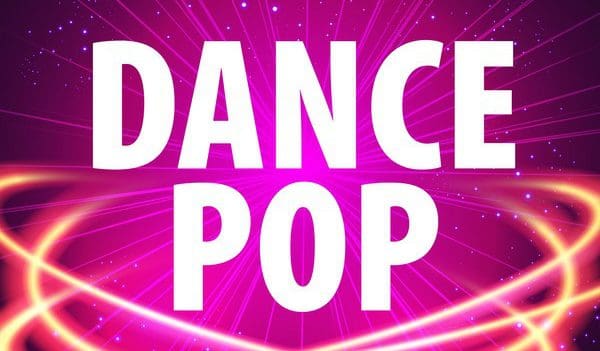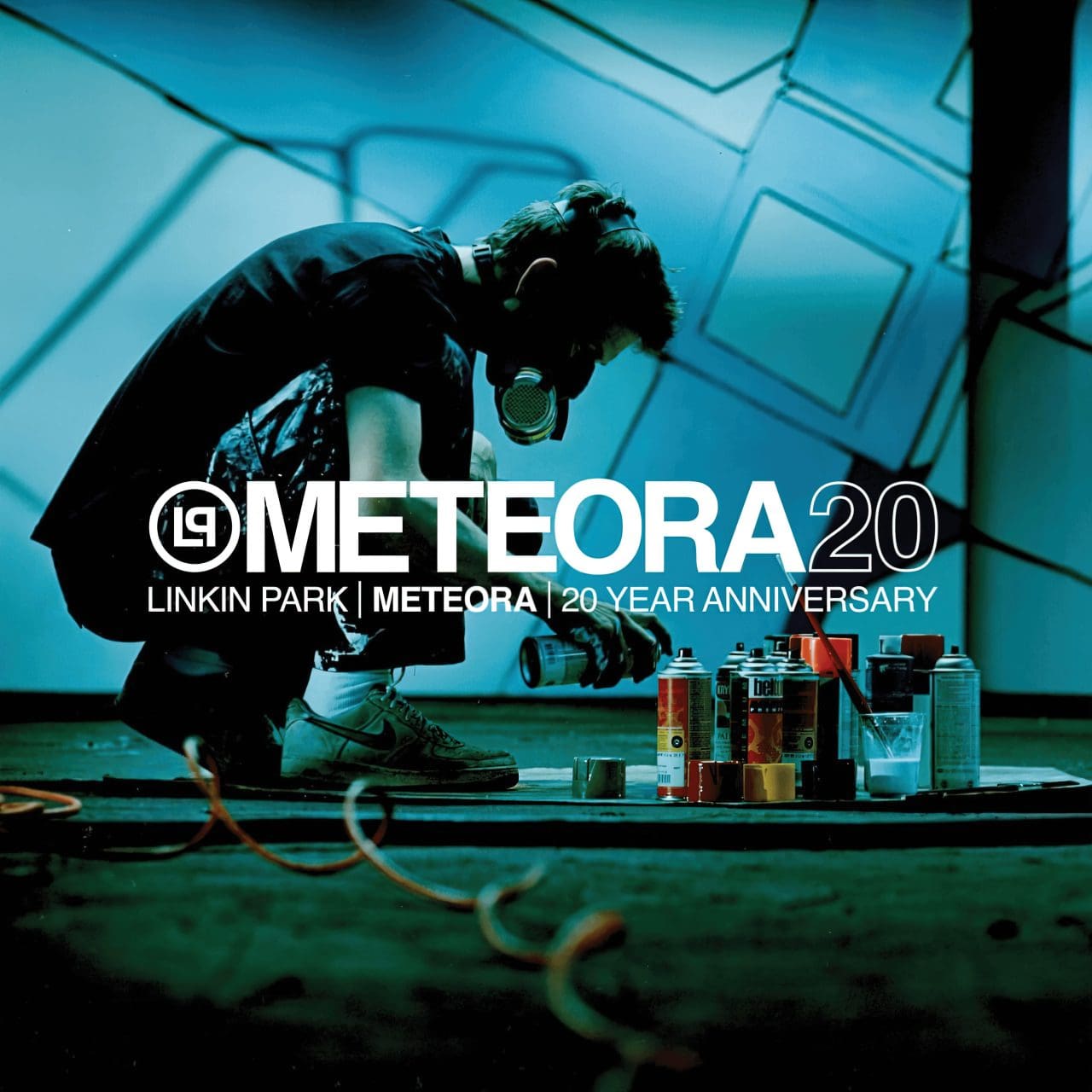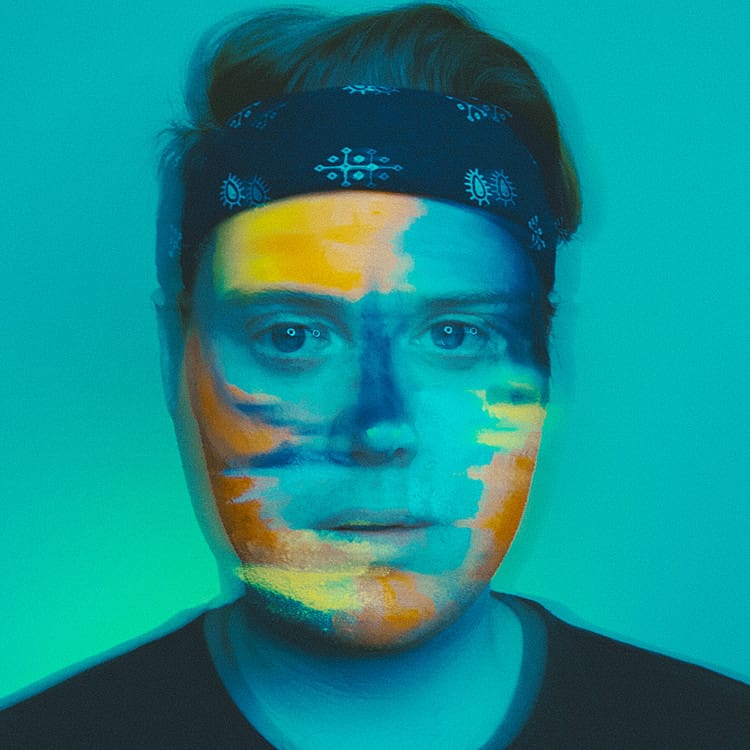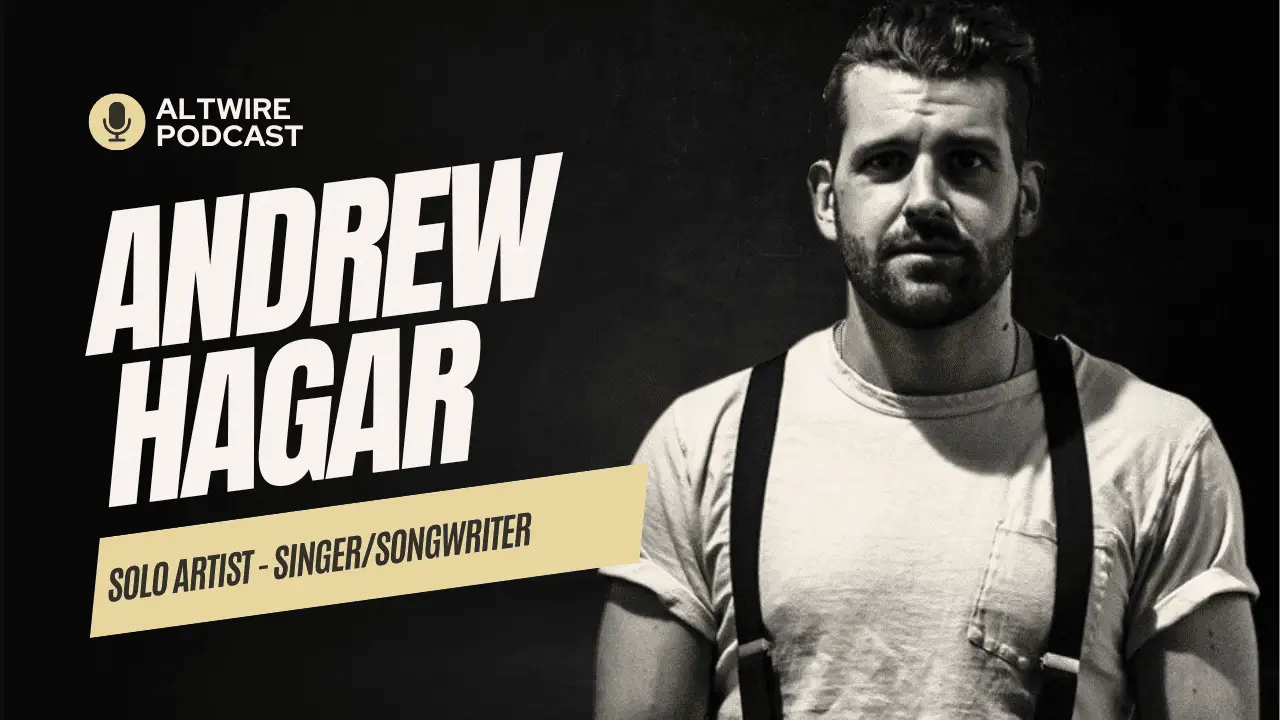La música Dance Pop es un género de música electrónica de baile que contiene música adecuada para discotecas, pero lo bastante accesible como para abrirse camino en la radio pop. Suele ser muy ecléctica e incorpora elementos de múltiples géneros, como el R&B, el trance, el tecno, el house y el funk, entre otros.
La composición de la canción en sí suele ser el centro de atención, más que las voces, lo contrario que en la música pop tradicional, impulsada por el cantante o cantantes principales. Pero disco no es: las formas modernas de ese género se conocen como Nu-Disco.
Años 70-80: Los orígenes del dance pop
Eso no quiere decir que el dance pop no le deba nada a la música disco: sería falso. La música dance pop surgió a principios de los 80 como respuesta al declive de la popularidad de la música disco. Más experimental que su predecesor y más electrónico y basado en sintetizadores, el dance pop ofrecía un sonido más impulsado por los DJ.
La música disco lo hizo posible: en la industria, antes de mediados de los 70, los DJ eran desconocidos y se encontraban sobre todo en la radio. Con el auge de los superdjs de la época, que a menudo también tenían formación musical, empezaron a producir música por su cuenta.
Tras el declive de la música disco, algunos de estos DJ, como Larry Levan y Frankie Knuckles, se convirtieron en productores de gran éxito.
Levan produjo los primeros éxitos del dance pop, como "Ain't Nothin' Goin' On But The Rent" de Gwen Guthrie y "Heartbeat" de Taana Gardner, mientras que a Knuckles se le atribuye el mérito de ser el pionero de la música house moderna, sucesora de la música disco.
Entre los vocalistas que gravitaron hacia el dance pop se encuentran George Michael y Wham, cuyo "Despiértame antes de irte"es una de las canciones dance-pop más reconocidas de todos los tiempos. Otros artistas de esta época son Madonna, que contribuyó al desarrollo del dance-pop con grandes éxitos comerciales como "Vacaciones" (1983). La versión de Cyndi Lauper de la canción de 1978 de Robert Hazard "Las chicas sólo quieren divertirse" y la canción pop bailable de Whitney Houston llamada "Quiero bailar con alguien"(1987) son otros ejemplos notables.
El primer dance pop era sencillo, pero más estructurado que la música de baile tradicional. Además, la música estaba estrechamente alineada con otros géneros electrónicos de alta velocidad, como el Hi-NRG, también derivado de la música disco.
1990s: "¡He oído que la música disco vuelve!"
El dance pop fue un género de nicho durante gran parte de los años ochenta y principios de los noventa, ya que la industria pasó por alto a los artistas que sonaban demasiado a música disco.
Pero esas influencias estaban a punto de regresar. A pesar de su caída pública, la música disco nunca murió realmente, sino que se desvaneció en la oscuridad. Los productores de música disco pasaron a la clandestinidad y sobrevivieron varios géneros con influencias directas de la música disco, como el Italo y el Eurodisco, el Hi-NRG y el más exitoso, el house.
Cuando algunos de estos artistas, como Levan y Knuckles, se convirtieron en cultos, la música comercial se dio cuenta. Se pidió a los DJ que remezclaran canciones populares o, como en el caso de Levan y Knuckles, que crearan música ellos mismos.
Como resultado, el dance pop se hizo menos experimental y más contemporáneo, con artistas, DJ y productores dispuestos a construir todo su sonido en torno al género. Un grupo capaz de dar este salto fue Deee-Lite, de Nueva York.
Deee-Lite, compuesto inicialmente por la cantante Lady Miss Kier, el ucraniano Supa DJ Dmitry y, más tarde, el DJ de jungla coreano-japonés Towa Tei, se formó a mediados de la década de 1980, en aquellos años "underground". El sonido del grupo era abiertamente retro y fusionaba elementos de música disco, funk, techo, house y otros géneros de baile. Su aspecto también lo era, y Elektra se dio cuenta.
Podría decirse que "Groove Is in the Heart", de 1990, supuso el nacimiento del dance-pop moderno. Con la participación de la banda, Bootsy Collins y Q-Tip, de A Tribe Called Quest, la canción y el estilo del grupo, inspirado en la música disco, anunciaron una nueva era del pop bailable.
La música disco también experimentó un regreso kitsch durante la década, con sus ritmos sampleados en una variedad de estilos. hip-hopy de baile. Los que vivieron en esa época también recordarán el infomercial de CD "Disco Fever" de los años 90. declarando audazmente el regreso de la música disco.
Artistas de club como Britney Spears, Ace of Base y las Spice Girls, entre otras, dominaron las listas de éxitos de la radio pop durante la década. Mientras que la iteración de principios de los 90 del género tomó prestadas influencias del R&B, el House y el New Jack Swing, a finales de la década empezaron a introducirse paulatinamente más elementos de electrónica en la música de baile, lo que hizo que la electrónica fuera muy popular en el pop dominante.
Década de 1990-2000: El dance pop y la cultura rave
La nueva popularidad de la música dance hizo que la industria volviera a correr hacia el underground. Como antes, las discográficas y los productores volvieron a captar talentos de la escena nocturna. Sin embargo, esta vez las discográficas no encontraban artistas en las discotecas, sino en la creciente cultura rave underground. Esta vez, los artistas de house, trance (primo del house, de tempo más alto) y techno encontraron el éxito popular.
También podría decirse que el dance pop volvió a sus raíces experimentales y centradas en los productores durante este periodo. A los DJ de trance Paul Oakenfold y Paul Van Dyk se les atribuyen muchas remezclas y canciones populares del dance pop durante este periodo, al igual que a los DJ de house Armand Van Helden y Danny Teneglia, entre otros.
Pero la cultura rave, como la música disco, fue víctima de su propio éxito. A las fiestas a las que en los años noventa asistían unas pocas docenas de personas, ahora acudían miles. Como resultado, los elementos más sórdidos de estos eventos -el consumo de drogas ilícitas- se generalizaron.
Obviamente, esto atrajo la atención de los medios de comunicación, incluido el entonces senador por Delaware Joe Biden, que abogó por prohibir los eventos y encarcelar a los promotores. Aunque la posición más bien extrema del senador Biden en la materia recibió el rechazo incluso de quienes estaban preocupados por el auge de los partidos en sus distritos y comunidades, hubo un acuerdo casi unánime en que había que hacer algo. Así, Biden y otros trabajaron en una versión suavizada de las primeras recomendaciones de Biden.
Sin embargo, la versión suavizada era igual de perjudicial. Inicialmente denominada Ley de Reducción de la Vulnerabilidad de los Estadounidenses al Éxtasis (RAVE), se convirtió posteriormente en la Ley de Lucha contra la Proliferación de Drogas Ilícitas de 2003. En ella, la definición de "establecimiento de operaciones de fabricación" para incluir tanto los usos temporales como permanentes de un lugar.
La legislación tuvo el efecto inmediato de ilegalizar todas las "rave", o al menos la forma en que se celebraban en aquel momento. Pero el daño ya estaba hecho: los gobiernos estatales y locales ya se habían puesto en marcha para frenar estas fiestas, y la IDAPA no hizo más que formalizarlo.
Probablemente te estés preguntando ahora qué tienen que ver el Presidente Biden, la RAVE/IDAPA y las fiestas underground con el dance pop. Pues bien, al igual que ocurrió con la muerte de la música disco, los promotores y DJ tuvieron que encontrar de nuevo formas de ganar dinero, ya que estos eventos se vieron obligados a pasar a la clandestinidad una vez más, lo que los hizo comercialmente inviables.
Algunos de los nombres más notables, como Oakenfold y Van Dyk, volvieron a encontrar el éxito al cambiar su enfoque hacia la música popular.
(Nota del editor: Queremos subrayar que incluir al Presidente Biden en esta historia no es en modo alguno criticar u opinar sobre sus acciones. Sin embargo, no se puede subestimar el papel del Senador Biden en la evolución de la música popular de baile).
Mediados de la década de 2000 en adelante: El dance pop vuelve a sus raíces discotequeras
Aunque Spotify hizo mucho ruido con el dance pop allá por 2021, sus raíces modernas se remontan mucho más atrás, a principios y mediados de la década de 2000. Can't Get You Out of My Head" de Kylie Minogue se convirtió en un gran éxito a principios de la década de 2000. Madonna, pionera del dance pop, ayudaría a devolver el género a sus raíces disco con Confessions on A Dance Floor en 2005, que contenía elementos de Euro Disco. Su single principal de "Colgado" sampleó el clásico de ABBA de 1979 "¡Dame, dame, dame! (Un hombre después de medianoche)".
Más recientemente, en las décadas de 2010 y 2020, ha habido un interés continuado por la música dance pop, con artistas como Carly Rae Jepsen, Justin Bieber, Selena Gomez, Lady Gaga y Katy Perry, que han tenido éxito en las listas de éxitos.
Artistas destacados del dance pop
Madonna
A Madonna se le atribuye la popularización de la música dance pop y ha tenido varios éxitos a lo largo de los años. Algunos de sus temas más famosos son "Material Girl", "Like a Prayer", "Vogue", "Like A Virgin" y "Hung Up". La vocalista de dance pop también es conocida por sus actuaciones sobre el escenario, que a menudo incorporan visuales y temas provocativos.
Cher
Cher, "La Diosa del Pop", es un icono de la música de baile, y con razón. Reconocida por su singular voz de contralto, Cher sigue cautivando a las multitudes a sus 70 años. Tras conseguir un sencillo número uno con su dúo con Sonny Bono, "I Got You, Babe", Cher siguió aumentando su popularidad a lo largo de las décadas. Cher seguiría lanzando éxitos como "Gypsies, Tramps & Thieves", "Dark Lady" y "If I Could Turn Back Time", explorando muchos géneros diferentes. Sin embargo, el éxito más notable de Cher fue su famosa contribución al Dance Pop, el exitazo "Believe" (1999), ampliamente acreditado por introducir el autotune a las masas.
Janet Jackson
Janet Jackson es una de las artistas de más éxito de la historia, con más de 100 millones de discos vendidos en todo el mundo. Algunas de las canciones más famosas de Janet Jackson son "What Have You Done For Me Lately?" "Control" y "Nasty".
Michael Jackson
El éxito debe ser cosa de familia, ya que el fallecido Michael Jackson es el músico de dance pop de más éxito, con más de mil millones de discos vendidos en todo el mundo. Enigma de la música pop, era conocido por su música innovadora, sus movimientos de baile y sus actuaciones sobre el escenario. Su excéntrica vida personal le convirtió en el preferido de los paparazzi, y su nombre apareció casi siempre en los tabloides durante toda su vida. Sus éxitos incluyen canciones como "Bad", "Billie Jean" y "Thriller".
Cyndi Lauper
Cyndi Lauper es una cantante, actriz y activista LGBT estadounidense. Su álbum de debut "She's So Unusual" (1983) fue un gran éxito y produjo cuatro sencillos entre los cinco primeros del Billboard Hot 100, incluido el número uno "Girls Just Want to Have Fun". Fue el primer éxito de una artista pop femenina en aquella época.
Kylie Minogue
Kylie Minogue es una cantante australiana y la artista australiana con más ventas de todos los tiempos. Alcanzó la fama a finales de los 80 con "Locomotion". Desde entonces, ha publicado varios álbumes y singles de éxito. Algunas de sus canciones más famosas son "Can't Get You Out of My Head", "Spinning Around" y "Locomotion".
Ace of Base
Ace of Base es un grupo de pop sueco que saltó a la fama internacional en la década de 1990 con su álbum de debut "The Sign", que produjo los exitosos singles "All That She Wants", "The Sign" y "Don't Turn Around".
Spice Girls
Las Spice Girls son un grupo británico de pop formado en 1994. Inicialmente compuesto por Emma Bunton, Geri Halliwell, Mel B, Melanie C y Victoria Beckham, tuvieron su primer éxito número uno en el Reino Unido con "Wannabe" en 1996. Poco después publicaron su segundo álbum, "Spiceworld". Le siguió su tercer álbum, "Forever", del que se han vendido más de cuatro millones de copias en todo el mundo.
Britney Spears
Britney Spears es otro de los grandes nombres del dance pop que comenzó su carrera a finales de los años noventa. Su single de debut "...Baby One More Time" (1999) fue un éxito instantáneo y alcanzó el número uno en varios países. Después tendría muchos otros sencillos de éxito, como "Oops!... I Did It Again" (2000), "I'm a Slave For You" (2001) y "Toxic" (2004), todos ellos en lo más alto de las listas de Dance de todo el mundo.
Lady Gaga
Lady Gaga es una cantante, compositora y actriz estadounidense. Se dio a conocer como solista en 2008 con su primer álbum, "The Fame" (reeditado posteriormente como The Fame Monster). Este álbum contenía una serie de temas dance pop bien recibidos tanto por la crítica como por los fans.
Desde entonces, Gaga ha publicado otros álbumes que han obtenido buenos resultados en las listas Billboard, como "Born This Way" (2011). Aunque su popularidad fluctuó a lo largo de los años, su actuación en Ha nacido una estrella revitalizó su carrera con el exitazo "Shallow".
Katy Perry
Katy Perry es otra estrella del pop que saltó a la fama a finales de la década de 2000 con sus exitosos singles "I Kissed a Girl" (2008), "California Gurls" (2010) y Teenage Dream", que llegaron a lo más alto de las listas de baile.
El primer álbum de Perry se llamó como su nombre de nacimiento (Katy Hudson), pero a partir de ahí se reinventó hasta convertirse en la estrella del pop que es hoy. Desde entonces ha lanzado muchos otros álbumes como "One of the Boys" (2008), "Teenage Dream" (2010), "Prism "(2013)." Witness "(2017), y Smile (2020).
Ariana Grande
Aunque Ariana comenzó su carrera musical a los 15 años en Broadway, Ariana Grande saltó a la fama en 2013 cuando interpretó el papel de Cat Valentine en la serie de Nickelodeon "Victorious."
Más tarde conseguiría un contrato discográfico gracias a unas versiones suyas descubiertas por ejecutivos en YouTube, y a partir de ahí, todo fue historia. En 2013, Grande lanzó su primer álbum de estudio, "Yours Truly", que debutó en el número uno de la lista Billboard 200 de Estados Unidos. El álbum contenía "The Way" y "Baby I", que alcanzaron el número 9 y el número 21, respectivamente. El segundo álbum de estudio de Grande, "My Everything" (2014), también alcanzó el número uno en Estados Unidos. Dio lugar a los exitosos singles "Love Me Harder", "Bang Bang" y "One Last Time". Ariana ha seguido dominando las listas de éxitos pop desde entonces.
Nuestra selección de las mejores canciones dance pop de todos los tiempos
Aunque hay miles de canciones dance pop, los siguientes temas fueron los que más destacaron para el personal de AltWire.
"Can't Get You Out of My Head" - Kylie Minogue
Esta canción fue un éxito mundial número uno en 2001, alcanzando los primeros puestos en 40 países. Se convirtió en el primer sencillo de Minoque en el Top 10 en 13 años en Estados Unidos y fue ineludible en 2001. Es una melodía pegadiza que se te quedará grabada en la cabeza durante días, y es sin duda dance-pop en estado puro.
"Wannabe" - Spice Girls
Esta canción fue el single de debut del grupo y alcanzó el número uno en varios países, lo que la convirtió en una de las canciones dance-pop de más éxito de la década de 1990. Así que, si quieres escuchar el clásico girl power, ¡esta es tu canción!
"Toxic" - Britney Spears
En 2004, Spears lanzó su cuarto álbum de estudio, "In The Zone", que contenía "Toxic". Es una de las mejores de Britney, con una icónica sección de cuerda sampleada.
"Bad Romance" - Lady Gaga
Lanzada en 2009 como single principal del tercer EP de Gaga, "The Fame Monster". Con un vídeo musical único y teatral y dinámicos ritmos de baile, esta canción es uno de los mayores éxitos de Lady Gaga.
"Believe" - Cher
Esta canción se publicó en 1998 como sencillo principal del vigésimo segundo álbum de estudio de Cher, "Believe". El éxito dance-pop explotó nada más salir a la venta. Destacó por su uso pionero del autotune. Mientras que algunos utilizan el efecto para corregir interpretaciones imperfectas, Cher lo utilizó para conseguir efectos especiales (no para encubrir su incapacidad para alcanzar notas altas, como se rumoreó en su momento), creando un efecto vocal sin precedentes, que ha sido imitado a menudo desde entonces, más recientemente por Post Malone.
"I Wanna Dance With Somebody" - Whitney Houston
Esta canción se publicó en 1987 como sencillo principal del segundo álbum de estudio de Houston, "Whitney". Rápidamente se convirtió en un éxito mundial y sigue siendo uno de los temas más emblemáticos de Whitney Houston. Con su ritmo alegre y su potente voz, no es de extrañar que esta canción siga siendo tan popular hoy en día.
"¡Wake Me Up Before You Go-Go" - Wham!
Lanzada en 1984 como single principal del segundo álbum de estudio de Wham! "Make It Big". Con su instantáneamente reconocible intro "j-j-j-jitterbug!", esta canción es de escucha obligada para cualquier entusiasta del dance-pop. Es una de las canciones más emblemáticas de George Michael.
Conclusión
Si quieres saber más sobre el dance pop o la música de baile, esperamos que este artículo te haya servido de introducción. ¿Tienes alguna pregunta o crees que nos hemos dejado algo? Háznoslo saber en los comentarios.



















